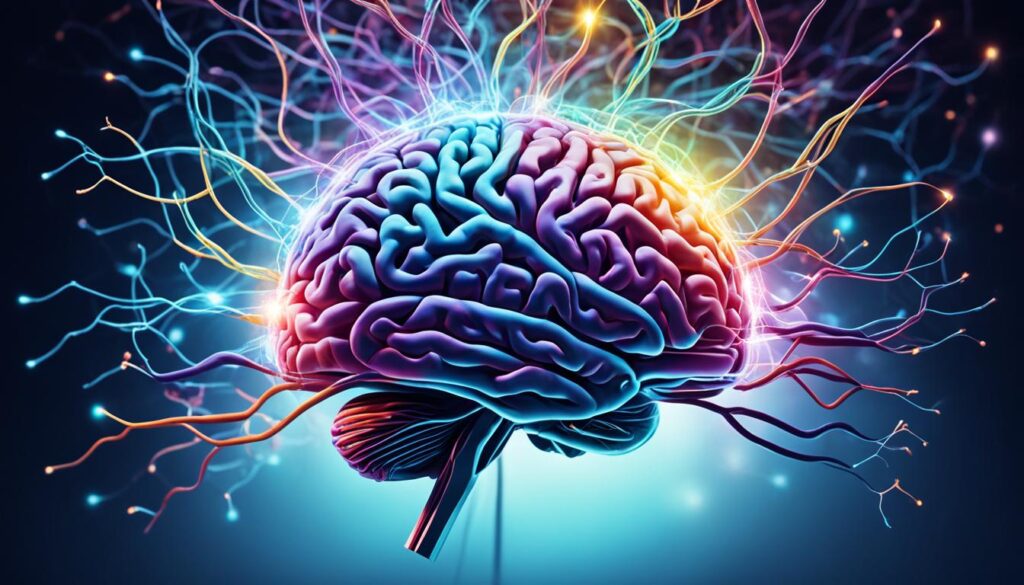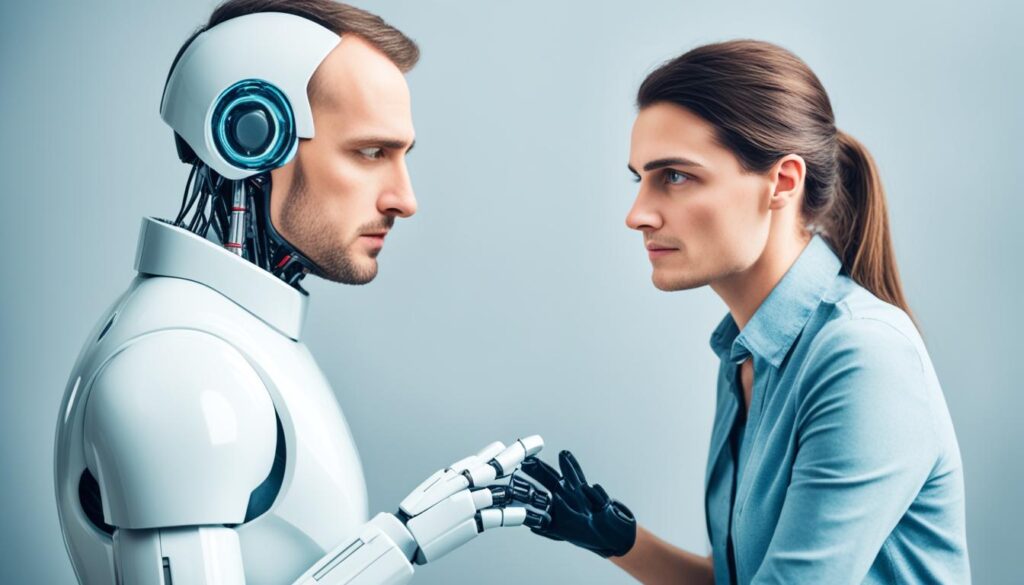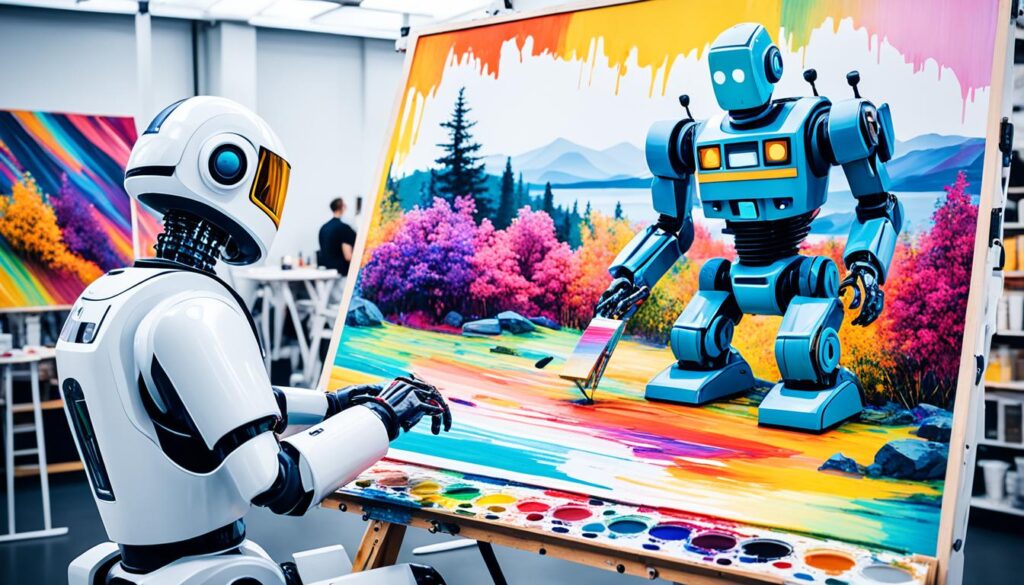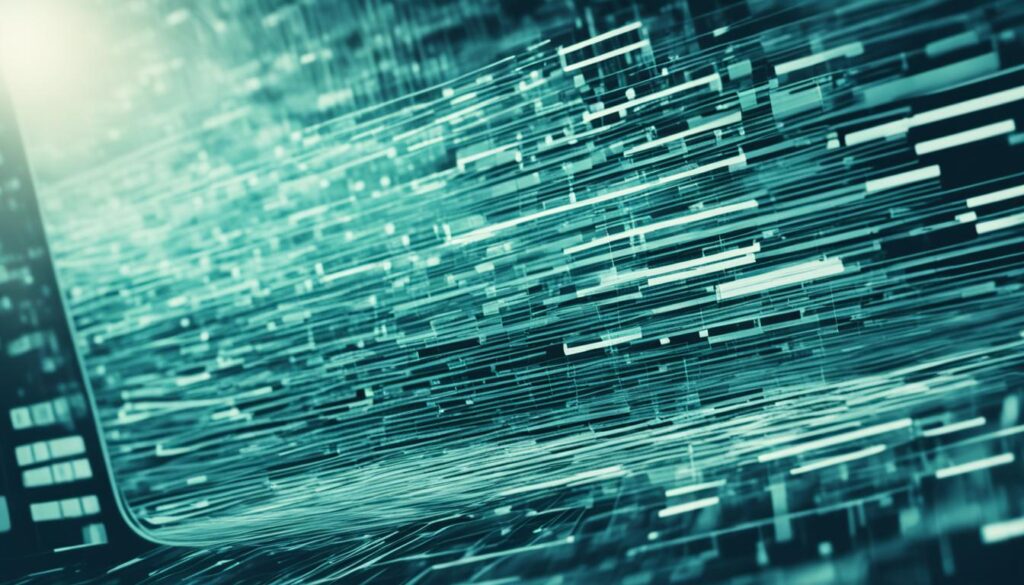The debate about artificial intelligence (AI) and its effect on jobs is big news. With AI models like OpenAI’s ChatGPT and Google’s Gemini getting a lot of attention, people wonder: Can AI really replace us, or are there limits that make us special? In this article we’ll discuss why AI can’t replace humans?
Some worry that AI will take over human jobs. But tech experts say it’s not that simple. AI is great at recognizing patterns and handling lots of data. But, humans are unmatched in complexity, creativity, and understanding feelings – skills needed for many jobs.
AI uses math to figure things out, but humans learn by understanding the big picture and context. This shows AI can’t do everything, especially tasks that need deep thinking and adapting to new situations.

It’s not about AI replacing us, but using it to make us work better. For example, a software engineer can use AI to check code faster, leaving more time for creative work. Experts think we’ll see more jobs that use AI, but it’s about knowing how to use it well with our skills.
Key Takeaways
- Human intelligence beats AI in complexity, creativity, and understanding feelings.
- AI uses patterns, while humans learn by understanding the big picture.
- AI is about making us work better, not replacing us.
- Jobs that use AI will grow, but knowing how to use it well matters.
- AI’s fast growth, like with ChatGPT, means it’s becoming part of our work, not replacing us.
AI has No Physical Form
Artificial intelligence (AI) has made big steps in planning and management. But, it can’t be in the real world like humans are. AI can’t touch things or do tasks that need hands-on work. This makes it hard for AI to do tasks that need physical work.
AI can’t do tasks that need manual skills or touching things. AI can help with planning and managing warehouses and inventories. But, people have to do the actual work. AI-powered self-driving cars can drive well, but they need roads made by humans and can’t handle surprises like humans do.
The Limitations of AI in the Physical World
AI has trouble outside of digital spaces. It’s great at analyzing data and spotting patterns, but not at tasks that need skill, flexibility, and hands-on work. Because AI can’t touch things, it can’t do many jobs. It mainly helps with planning and managing, not doing the work itself.
| Physical AI Limitations | Human Physical Abilities |
|---|---|
| Can’t do tasks that need skill or touching things | Has the skills and touch to put plans into action and do physical tasks |
| Has trouble adapting and handling surprises | Can adapt and handle changes well |
| Best for planning and managing | Can do many tasks, from planning to doing the work |
In the end, AI can’t replace human workers in tasks that need touching or adapting. AI helps with planning and managing, but people do the actual work.
AI Lacks Emotional Intelligence
Technology is getting better, and so is artificial intelligence (AI). AI can do many things on its own, like understand voices or diagnose diseases. But, it still can’t understand emotions like humans do.
Empathy is a key part of emotional intelligence (EQ) that AI can’t quite get. AI can pretend to be empathetic, but it doesn’t really feel emotions like we do. This is a big problem in areas like mental health, social work, and teaching, where feeling and understanding others is key.
In healthcare, AI can help diagnose diseases, but it can’t give the emotional support patients need. It’s seen as a tool that helps humans, not a replacement. AI can spot things we might miss, but humans add the emotional touch that makes a difference.
The Challenges of Replicating Emotional Intelligence
AI can’t really feel empathy because it’s based on logic, not emotions. Even AI like ChatGPT can give emotional answers, but it doesn’t get the full picture of human feelings.
Maybe AI can get better at feeling empathy by using more senses, like seeing, hearing, and touching. This could help AI learn and understand emotions better. But, it’s up to us to make sure AI is used for good, not harm.

“Emotional intelligence, not IQ, is what truly matters in the modern workplace. While AI can excel at tasks requiring logic and computation, it cannot match the human touch when it comes to emotional understanding and empathetic decision-making.”
AI Can’t Match Human Creativity
AI has made big steps in creative areas, but it can’t beat human creativity yet. AI uses algorithms and data to make content. But, it’s limited by its programming and training data. Humans, on the other hand, have a unique way of thinking that changes and grows.
Thanks to new tech, AI can now make content that seems human-made. Neural networks help big names like The Associated Press and Forbes write news that looks like it was done by people. Also, AIVA, a machine learning tool, is now a recognized composer, making music for movies and games. But, AI’s work is based on what it’s learned before and can’t create something totally new.
“We grew to 100k/mo visitors in 10 months with AIContentfy” – showing how AI helps websites get more visitors, which is good for digital marketing.
Humans are amazing at making new things, changing old ideas, and exploring new areas. Works like Marcel Duchamp’s “Fountain” and James Joyce’s “Ulysses” changed their fields and showed what humans can do. AI can help in creative tasks, but working together with humans is best. This way, AI’s efficiency meets human creativity and feeling.

In the end, AI has made big moves in creative fields, but it can’t touch human creativity’s full power. The future is about AI and humans working together. This way, we can make new and amazing things in art, design, and innovation.
AI Is Only as Good as Its Data Set
AI has made big strides, but it’s not as smart as it seems. It just looks at data to find the best answer for a question. AI can only do as well as the data it gets. Without good data from humans, AI can’t work right or give correct answers.
The quality of AI depends on the human data input it uses. If the data is biased or wrong, the AI will give bad answers. AI’s limits come from its data. Humans make sure AI gets the right information to work well.
“AI is only as good as the data it’s trained on. Without high-quality, unbiased data provided by humans, AI cannot generate reliable and accurate insights.”
AI’s skills are limited by its training data. It can help with many tasks but needs humans to check its work. Humans are key in making AI ai accuracy and reliability better. Even as AI gets better, humans will always be needed.

| Metric | Value |
|---|---|
| Number of AI startups since 2000 | Significant increase |
| Demand for AI-related roles | High |
| Investment in AI startups | Substantial increase |
AI Lacks Soft Skills
AI has made big strides in many areas, but it’s still missing in soft skills. Skills like creativity, getting along with others, and thinking deeply are key in today’s work, especially for freelancers. AI can’t fully match these skills that make us uniquely human.
Creativity is a big deal for freelancers. It helps with solving problems, thinking of new ideas, and being flexible. AI finds it hard to copy human skills like understanding feelings and social stuff. It also has trouble with critical thinking, which is about looking at info, making decisions, and seeing different views.
AI’s big problem is it only uses what it knows from data. Humans can think on their feet and adapt quickly, something AI can’t do. AI can make art, music, and videos, but it takes many tries to get it right. It doesn’t have the natural creativity humans do.
The job world is changing fast, making soft skills more important for both humans and AI. AI can help with some tasks, but people are still needed to lead and show the soft skills needed for working well together.

“Soft skills, such as creativity, adaptability, leadership qualities, empathy, collaboration, and problem-solving, are essential in the workplace and are transferable skills that humans possess in contrast to AI tools.”
Why AI can’t Replace Humans
AI is getting better, but it won’t replace human workers. AI can’t do everything that humans do. It needs fact-checking and human oversight and adaptability to work right.
AI depends on the data it gets trained on. AI is only as good as the information it is provided. If the data has mistakes or biases, AI can spread wrong info. That’s why human oversight of AI is key to fix errors.
AI is great at certain tasks but not flexible like humans. When things don’t go as planned, humans can think on their feet and solve problems. AI’s inflexibility is a big issue in jobs that change a lot.
Humans have skills like emotional intelligence and teamwork that AI can’t match. These skills are vital in many jobs, like management and teaching. The human touch is something AI can’t replace.
AI can help with some tasks, but we still need human intervention and oversight. Using both AI and humans makes a workforce better. It uses the best of both worlds.
“Automation and AI systems are limited by their rigid adherence to rules, indicating that humans have an advantage in problem-solving and adapting to unforeseen circumstances in the workplace.”
As AI becomes more common in work, we must value human workers more. They are key to making AI work well. By balancing AI with human skills, companies can use AI’s strengths while keeping human smarts and creativity.
Conclusion
AI and work are changing fast, but human skills are still key. AI will change many jobs, but humans bring things like creativity and emotional smarts. These skills are vital for working well with AI.
To succeed with AI, we must adapt to new job needs. We should focus on skills AI can’t do, like thinking ahead, solving problems, and working with people. This way, workers and leaders can stay relevant and grow.
The future of work will mix human and machine skills. AI will help humans do more, not replace them. By learning new skills, everyone can do well in the changing work world.
FAQ
What are the limitations of AI that prevent it from replacing humans?
AI and automation will change work a lot. But, human skills, creativity, and emotional smarts are key. AI can’t feel emotions or be truly creative. It also needs humans for data and can’t do soft skills like teamwork on its own.
How is AI limited by its lack of physical form?
AI can’t do tasks that need hands or physical work. It’s stuck on screens. Even with AI’s help in planning, humans must do the actual work.
Why does AI lack emotional intelligence (EQ)?
AI doesn’t understand emotions at all. Many jobs need emotional smarts, like managing teams or teaching. Humans are still needed for these roles because AI can’t match their skills.
How does human creativity surpass AI’s capabilities?
AI can help in creative tasks, but it can’t be as creative as humans. Human creativity grows from our experiences and can’t be set by data. Working together, AI and humans can create something new.
What are the limitations of AI’s intelligence?
AI’s smarts can seem real but are based on data it’s given. It can only do what its data lets it do. Without good data from humans, AI can’t work well or give right answers.
How does AI lack the soft skills necessary for teamwork?
AI can’t be a true team player because it can’t learn soft skills like humans do. Skills like being respectful or creative are key in work. Machines can’t match these human traits.
Why is human oversight and intervention still necessary for AI and automation?
AI’s work isn’t always perfect and can spread false info. Humans must check AI’s work. While AI can do some tasks, humans are needed to guide, fix, and train it. AI can’t improvise or handle surprises like humans can.









